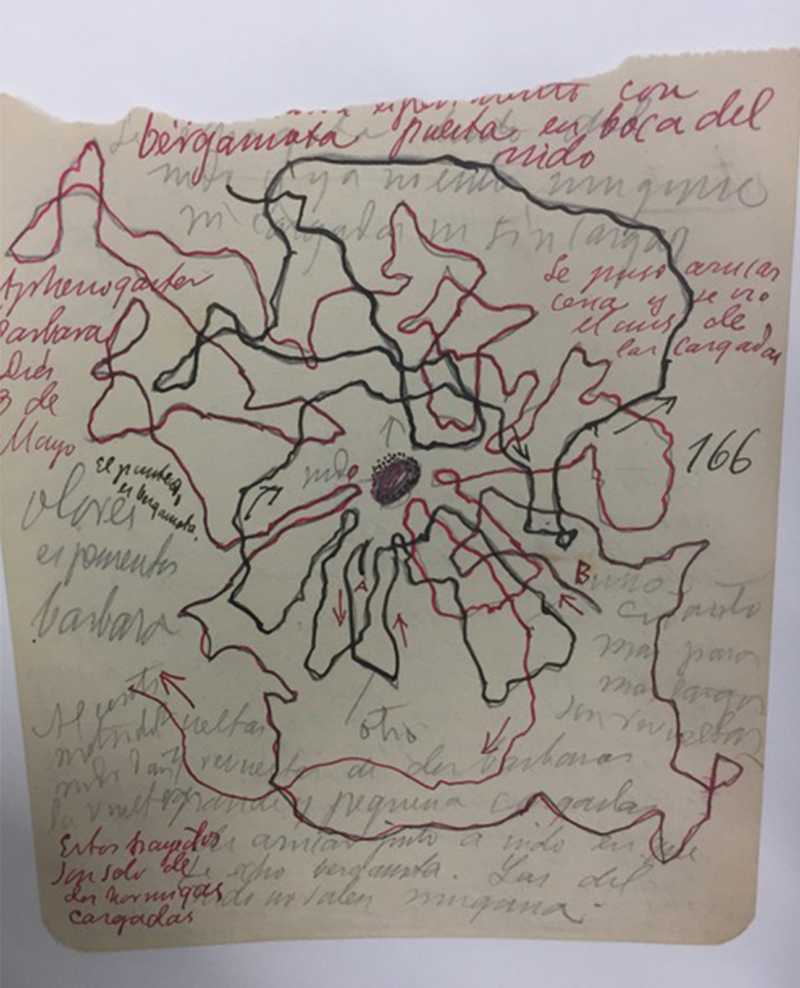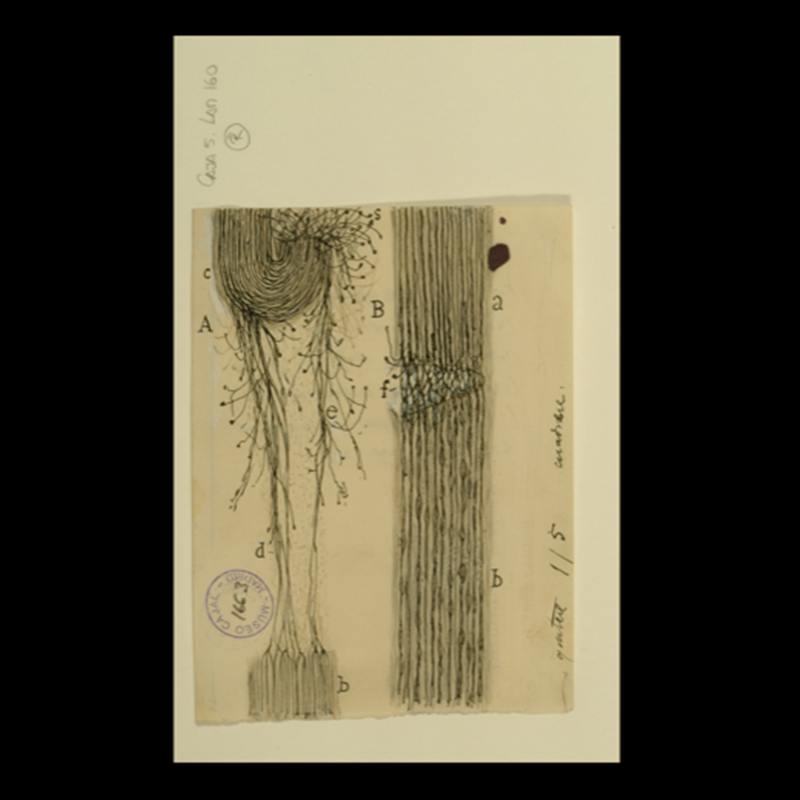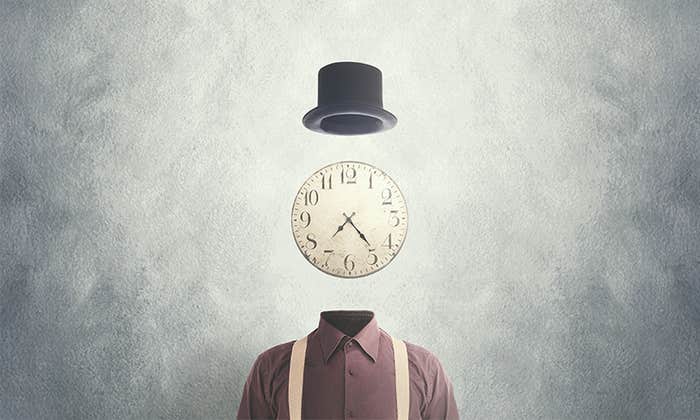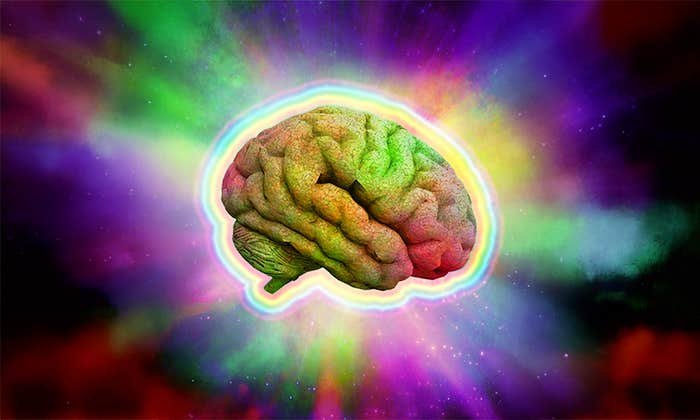In 1914, when World War I broke out, Santiago Ramón y Cajal, the most influential neuroscientist in the world—the man who discovered brain cells, later termed neurons— published only one article, by far his lowest output ever. “The horrendous European war of 1914 was for my scientific activity a very rude blow,” Cajal recalled. “It altered my health, already somewhat disturbed, and it cooled, for the first time, my enthusiasm for investigation.” Cajal’s tertulia, or café social circle, was “overwhelmed with horror and abomination, erasing the last relics of our youthful optimism.” Science was supposed to be universal, but now, as mail became unreliable, telegraph lines were cut, trenches were dug, and borders were almost constantly closed, scientists could not even share their work internationally.
The year before, Cajal had published the second monumental book of his career, Degeneration and Regeneration in the Nervous System, a two-volume tome consisting of over 800 pages and 300 illustrations definitively summarizing 20 papers written over eight years. “In adult centers [brain areas],” he wrote, “the nerves are something fixed and immutable: everything may die, nothing may be regenerated. It is for the science of the future to change, if possible, this harsh decree.” The conclusion depressed him. In his 60s, Cajal was beginning to feel the effects of old age. Writing Degeneration and Regeneration left him “profoundly exhausted.” Then Europe itself, with its network of international alliances not unlike nerve fibers, spectacularly degenerated.
The insect retina gave Cajal a “terrifying sensation of the unfathomable mystery of life.”
“I have to admit,” Cajal wrote in a new weekly newspaper, founded so that prominent intellectuals could share their views on the war, “I have a very low opinion of human beings.” As the “last hunter animal,” he wrote, we retain the “foul instincts” of beasts. “Our nerve cells continue to react in the same way as in the Neolithic Age,” he lamented. Because of “evolutionary resistance,” an “excruciating biological fact,” Cajal claimed that war will never be eradicated. All that civilization can hope to do is prolong the intervals of peace, but the “destructive phase” will always return, with each war becoming more horrifying. “In about twenty or thirty years, when the orphans of the present war will be men, the same stupendous massacre will be repeated,” he predicted with chilling accuracy. Suddenly, Cajal realized that the brain was not perfecting itself by evolution, as he had once believed. “Our descendants will be as putrid as we are,” he concluded.
Many illustrious figures responded by engaging directly in the Great War. Marie Curie developed mobile radiology units that made it possible to see bullets, shrapnel, and broken bones in soldiers on the frontlines, saving countless lives. German chemist Fritz Haber developed poison gas for use on the Western front. Ludwig Wittgenstein volunteered for the Austro-Hungarian army on the Eastern front, where the Italian army captured him. E.E. Cummings volunteered as an ambulance driver in France. Ernest Hemingway, in Italy, did the same. Rainer Maria Rilke trained in boot camp before transferring to the War Archive, where he wrote military propaganda. Spain remained neutral in the conflict, at least officially. But “without being at war,” one foreign diplomat observed, “the war was in Spain’s own backyard.” Cajal retreated to his own backyard, the garden of his country house, donned a straw hat to shield his bald pate from the sun, and hunched over a magnifying glass pointed at the ground, transfixed by the movements of ants. The world of ants provided not only an escape from the horrors of the war but a new arena in which to study living creatures that were, like neurons, dynamic in their own right.
Although Cajal had examined various animal tissues before, he had never formally studied ants. Cajal had a student who was studying the retina in ants and bees, a structure that Cajal expected would become more and more complex as species evolved. It turned out that the nervous system of an insect was as complex as that of any mammal. “Life never succeeded in constructing a machine so subtly devised and so perfectly adapted to an end,” Cajal marveled about the insect retina. He even admitted that encountering the insect retina was the only time he questioned Charles Darwin’s theory, albeit only momentarily. “The more I study the organization of the eye in vertebrates and invertebrates,” he wrote, “the less I understand the causes of their marvelous and exquisitely adapted organization.” The insect retina gave him a “terrifying sensation of the unfathomable mystery of life.”

For Cajal, the ranking that scientists imposed on species seemed not only deceptive but degrading, a sign of “aristocratic disdain,” casting the humblest creatures of the Earth as somehow beneath humans. His obsession with ants was inspired by one of his favorite childhood authors, Jean-Henri Fabre, known as “The Prince of Insects,” who, despite teaching six days a week at a provincial school, devoted his life to biological research, becoming the foremost expert on indigenous species in southern France. Darwin recognized Fabre as “an incomparable observer.” Like many young readers, Cajal was enamored of Fabre’s style, anthropomorphizing the insects that he studied with clear affection for the “humble,” “lowly,” and “hard-working” creatures.
Early myrmecologists, or those who study ants, idealized the creatures and searched for solutions to human problems by observing them, even striving to recreate their societies. Auguste Forel, who also played an important role in the discovery of the neuron, developed a fascination with ants during childhood, and, though he chose psychiatry as a profession, he devoted his summer vacations to myrmecology. After failing a medical examination, in 1874, he published a 450-page book on the ants of his homeland of Switzerland, focusing not only on their taxonomy, or classifications, but also on their behavior. Darwin congratulated Forel, saying that “seldom in my life have I been more interested by any book.” Darwin was himself an avid observer of ants and understood the greater importance of his research into them. “Everyone cares about Ants,” Darwin wrote in an 1861 letter, “—more notice has been taken of Slave Ants in the Origin than of any other passage.” When he noticed that, within a single colony of ants, some were much larger soldiers while others were much smaller workers, he observed that such variety was “by far the most serious special difficulty my theory has encountered.”
“Nothing transcendental has grown out of the human vermin,” concludes the ant.
Cajal met Forel on a trip to America in 1899, where they both delivered lectures at Clark University, and they may have talked about ants along the way. Forel hoped to model the human mind on the “psychic powers” of ants; he was specifically interested in the difference between instinct and intelligence. “The resemblance in a society of ants and a society of men is no mere matter of appearances,” he wrote. In ants, he encountered lessons of humanity. When he attempted to mix species in ant colonies, he saw the politics of Switzerland play out in miniature, including approximations of religious tensions and tensions between cantons and the national government. After some initial “quarreling,” Forel observed, supposed enemies worked together, which led him to believe that Switzerland, with its many languages, traditions, and cantons, could achieve similar harmony. Every nation-state, he concluded, should be organized like the fourmilliére, or ant colony. He later renamed his home La Fourmilliére.
Cajal’s experiments with ants focused, as Fabre’s had, on the homing instinct. Cajal delighted in creating new obstacles for them, each more imaginative and challenging than the last. He would carry them far from their nests and place scents along their route, kitchen spices like essence of bergamot and oregano, or everyday objects like bread, honey, sugar, meat, coins, and even water. He tried distracting them with noise, and lined their routes with paper or cotton to separate their feet from the ground. He placed mirrors in front of their nest and blocked its entrance with a rock. He covered one of their eyes, both of their eyes, and even removed their antennae. He put an ant on a piece of wood, raised it in the air, and spun it around to make it dizzy. Then, with his magnifying glass, he observed his subjects as they tried to find their way home, timing them with his watch while sketching their routes on scrap paper with meandering, almost zigzagging lines. No matter what devious methods he devised to confuse or disorient the ants, they always found their way home.

Though he did not publish another volume of neuroscience research, Cajal compiled enough observations on ants to fill a book. In his archives are hundreds of pages about them, with notes written on scraps of newspaper, the backs of envelopes, banquet invitations, and, eventually, full quarto pages. He even speculated about ants’ character traits—“ants have bad memories for facts,” “ants help the wounded,” and “if ants could talk they would say my mother but not my father,” referring to their reliance on their queen.
Cajal released his findings on the sensory system in ants in 1921, and he could have published a treatise about ants, but he decided that his work was not sufficiently original. He may have been comparing himself to Forel, who, in 1921 and 1922 published Le monde social des fourmis du globe comparé à celui de l’homme, or The Social World of Ants of the Globe Compared to that of Man. Since he was a child, before he ever formally studied science, Cajal had occupied himself by writing fiction, which he loved to read. In a short story published in 1922, Cajal imagined a letter that a scout from a parasitic species of ant called “slave-makers”—the ones that Darwin referenced in his letter—would write to his queen after exploring the human realm in search of new labor for the colony. Darwin was dismayed by the discovery of these slave-making ants because they offered a biological example that might normalize the human practice of slavery, which had disgusted him since his travels to South America on the H.M.S. Beagle. Human beings, Cajal’s ant reports, “live almost as we do”; they are nothing more than “exceptional ants.” The only difference is that they kill for pleasure and love nothing more than destruction. “Nothing transcendental has grown out of the human vermin,” concludes the ant, summarizing Cajal’s cynicism about human beings after the war.
“Our nerve cells continue to react in the same way as in the Neolithic Age,” Cajal lamented.
Though Cajal’s fascination with ants may seem far afield, it was a variation on themes he explored with neurons in the brain. Cajal’s tendency to anthropomorphize, critical to his understanding of the brain, had long been apparent to colleagues. When they met in London, the physiologist of the nervous system and future Nobel laureate Charles Sherrington noticed a peculiar tendency in Cajal. “If we would enter adequately into Cajal’s thought in this field,” Sherrington said, “we must suppose his entrance, through the microscope, into a world populated by tiny beings actuated by motives and striving and satisfactions not very remotely different from our own.” Cajal’s perspective seemed almost childish to Sherrington—unbefitting of a great scientist, to say the least. “Listening to him I asked myself how far this capacity for anthropomorphizing might not contribute to his success as an investigator,” Sherrington said. “I never met anyone else in whom it was so marked.”
Cajal’s anthropomorphism, which drew him to Fabre, was on full display in his descriptions of regenerating nerves from the year before the war. Some, when injured, died almost instantly. Others died “after a more or less prolonged agony,” in a “death struggle,” as degeneration radiated from the surface of the tissue to deeper layers. Some sprouts never managed to push their way forward, stunted by a “sedentary reaction, without any power of vanquishing the surrounding obstacles, or energy to form new paths”—they seemed almost to lack the will to persevere. Within a few days of a nerve being cut, Cajal found, sprouts could be seen shooting out from the nerve stump in every direction. He described these sprouts as “exuberant,” though they would face an “eventual collision with insurmountable obstacles that bend their course.” Eventually, some of the wandering fibers would reach the scar, and some of the sprouts would “throw themselves” into the breach like zealous soldiers charging onto the battlefield in an “invasion,” a prescient analogy given the state of the world soon after.
Cajal always preferred to tackle great problems in the world of the small. Despite his deep depression, and his disgust with humanity, he found, in regenerating neurons and ants, examples of perseverance, even hope. Cajal had a reputation for being a curmudgeon. In his laboratory, he preferred to work silently, and as he aged, due to a migraine condition, he withdrew further and further from society. But Cajal’s students recalled that, when describing his experiments with ants, he reveled in the fiendish tricks that he devised to stymie them with “childlike joy.” ![]()
Benjamin Ehrlich is the author of The Brain in Search of Itself: Santiago Ramón y Cajal and the Story of the Neuron. His work has appeared in Scientific American, LitHub, The Gettysburg Review, The Paris Review Daily, and New England Review. His first book, The Dreams of Santiago Ramón y Cajal, was published in 2016.
Lead photo: Andrey Pavlov / Shutterstock























